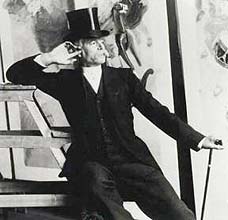| Biography of Jules Cheret (1836-1932) |
|

|
Cheret's importance is artistic, technical, and social. His innovations in lithography paved the way for the ascendence of the poster and the lithographic print in the late 1800s. The poster as historical artifact has both defined and immortalized an era. Charles Hiatt wrote of Cheret in 1895Many have produced charming wall pictures: nobody, save Cheret, has made an emphatic mark on the aspect of a metropolis. Paris, without its Cherets, would be Paris without one if its most pronounced characteristics; Paris, moreover, with its gaiety of aspect materially diminished. Jules Cheret was born to a creative family. He began his artistic endeavors at thirteen as an apprentice to a Parisian lithographer doing lettering for brochures. Cheret attended the National School of Design and soon after, moved to London where the prospect of employment was better. He found work drawing pictures and sketches; however, after six months he returned to Paris. In 1858, Cheret worked in Paris at the Cramer publishing house. A friend, impressed by his work, introduced Cheret to the perfume manufacturer Eugene Rimmel. Rimmel ultimately advanced Cheret the money necessary to set up his own lithography studio in Paris. Cheret innovated processes that moved lithography from a slow and extremely expensive method of printing images in one or two colors to one in which in every possible color of the rainbow could be produced for minimal expenditure. The beauty and color that came to be associated with the boulevards of Belle Epoque Paris were largely thanks to Cheret's inventiveness.
Motivated as an artist and a businessman, Cheret turned the operations of his printing establishment over to Chaix in 1881 but continued as its creative directive. He produced over one thousand posters in his lifetime - compare that to Mucha's hundred or Lautrec's thirty. He recognized then, as his advertising counterparts do today, that beautiful people radiating happiness are guaranteed to sell practically any product. His genius was in presenting scenes of almost contagious giddiness. In the opinion of art critic Karl Huysmans, there was immeasurably more talent in the smallest of Cheret's posters than in most of the works at the Paris Salon. |
|
|